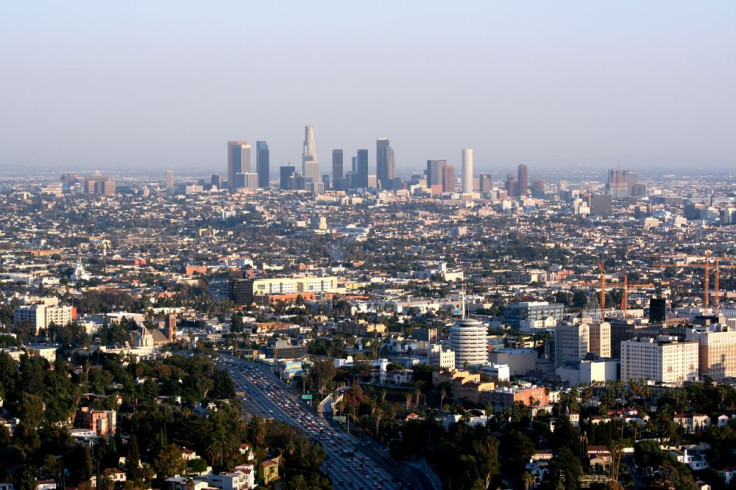LA’s Time To Lead A Fair, Strong And Clean COVID-19 Recovery

The plan, the means, the platform and the microphone: Los Angeles has what it takes to be the leading light when it comes to building back better after COVID-19. The opportunity is ours to demonstrate what’s possible when urban citizens rise together to address great challenges.
LA, like many cities, is on the front line on the COVID-19 crisis. With a county-wide population of greater than ten million people, we account for almost half of California’s confirmed COVID-19 cases. As we work to recover from the pandemic, the economic pain it has caused, and now the tension and protests stemming from recent acts of police brutality, it is clear that cities are ground zero for many key systemic challenges facing our society: human health, racial and economic inequality and increasingly the existential climate crisis, where these issues intersect.
LA’s cleaner air under lockdown shows us what research indicates: cities account for more than 70% of global CO2 emissions. Cities also account for more than half the world’s population and by 2050, two out of three people will likely live in a city. The number of megacities – those with more than ten million residents - is also on the rise. As ever, cities are where the action is – the place to address many of the world’s problems.
This is a moment for bold leadership from cities to reimagine a more sustainable and equitable urban model. There are four reasons why the time is now for LA to lead a fair, strong, and clean urban recovery.
First, LA has a plan. LA’s Green New Deal, released months before the pandemic, outlines a roadmap to address climate change by fostering economic growth and inclusion. Reaching plan targets by 2050 could result in a variety of positive outcomes, including $16 billion in avoided healthcare expenses each year. The plan is job-rich too. For example, investing in public transit, to meet the goal of half of all trips happening somewhere other than a single-occupancy vehicle by 2035, can support 788,000 jobs in the region. And investment in next-generation urban infrastructure not only creates jobs but improves quality of life for people in cities. World Resources Institute analysis shows that innovation in urban mobility makes streets safer, reduces air pollution and lowers CO2 emissions.
Second, LA is a living laboratory for virtually all environmental and urban challenges facing the planet. Right here in our backyard, we experience wildfires, drought, air pollution, rising sea levels, congestion and traffic. We witnessed the terrible human suffering related to the wildfires last year, which was compounded by economic costs of more than $25 billion in state-wide insured damages alone. There are other rising costs too: damage to California’s residential and commercial property from sea-level rise and inundation could reach $17.9 billion by 2050.
At the heart of the scientific method is the notion that it is helpful to observe a phenomenon in order to affect it. Our city is a place to do both. Sitting in a state with 80% of the country’s tech capitalization, LA has the power to innovate and escalate solutions to these challenges.
As has been shown in areas such as renewable energy and sustainable mobility, new business models and technologies have the potential to benefit Angelenos and serve as models more broadly. It’s imperative that we invest in urban laboratories for the creation and deployment of innovative solutions. Pandemic-related stimulus dollars provide a once in a generation opportunity to do so.
Third, LA has a platform. Unbeknownst to many Angelenos, Mayor Garcetti now chairs the C40 City Climate Leadership Group, a global network of cities representing more than 700 million citizens and one-quarter of the global economy, all of which are committed to creating a healthier and more sustainable future. In this role, Mayor Garcetti convened a Global Mayors COVID-19 Recovery Task Force who agree that there can be “no return to business as usual.” As the leader of the pack, LA must set the standard - a role this city and state have historically played. London, Seoul, São Paulo, Miami, Austin, and the many other cities committed to this vision can be powerful partners in seizing this transformative moment.
Fourth, LA has arguably the world’s biggest microphone. Home of the global entertainment industry, LA already has an outsized cultural impact across the world. Deliberately or not, LA has often used this microphone to amplify messages of openness and imagination. Whether it’s Larry David driving his electric vehicle, Lisa Simpson being vegan, or Justin Bieber being photographed on one of LA’s ubiquitous electric scooters, this city has a unique ability to set new social norms.
Now is the time to harness the magnetic creative energy of our great city to build a new sustainable urban vision. Practically and symbolically, the way in which LA responds to the COVID-19 pandemic and the climate crisis will have long-lasting impacts on our economy, society, environment, and our wider culture. With the plan, the means, the platform and the microphone, we can lead a fair, strong, and clean recovery. In the words of LA’s renowned lyricist, Kendrick Lamar – “You can own this city, you have everything you need… you can take it all if you just dare to dream.”
Tammie Arnold is a former PIMCO Managing Director and Founding Partner of Alpha Ledger Technologies, Inc. Daniel Weiss is Co-Founder and Managing Partner of Angeleno Group, LLC., a clean technology investment firm. They are LA residents and WRI board members.
© Copyright IBTimes 2025. All rights reserved.





















